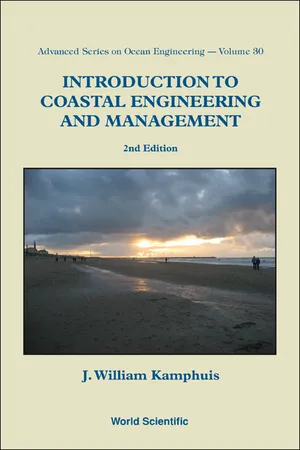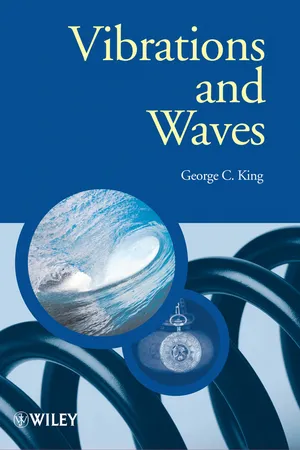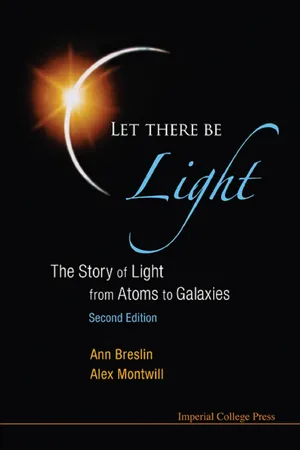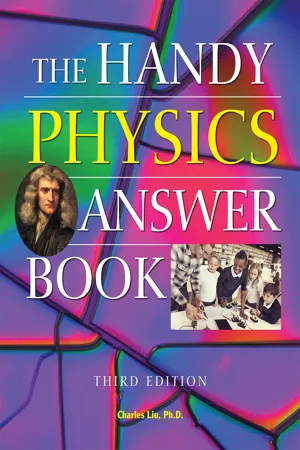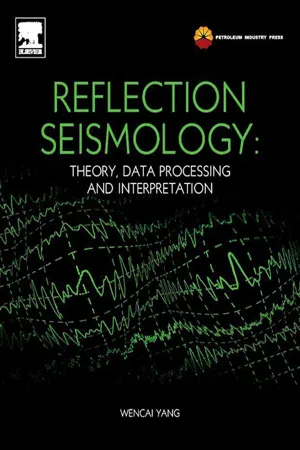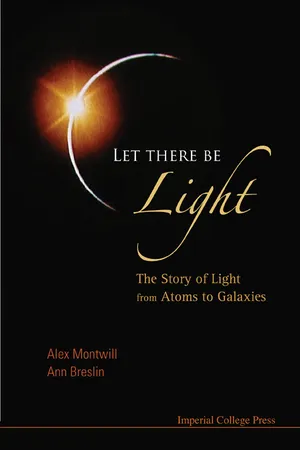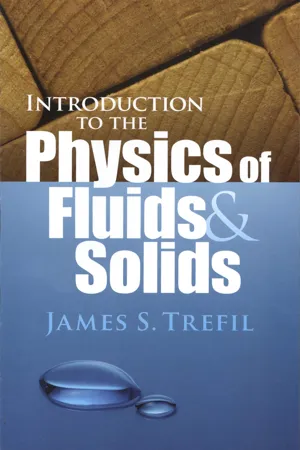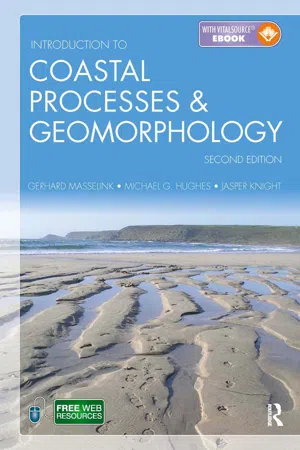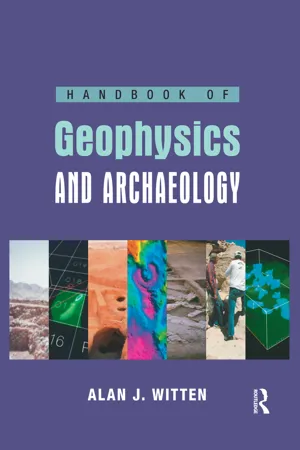Physics
Water Wave
A water wave is a disturbance that travels through water, transferring energy from one place to another. It is characterized by the oscillation of water particles, causing the surface of the water to rise and fall. Water waves can be created by wind, seismic activity, or the motion of an object through the water.
Written by Perlego with AI-assistance
11 Key excerpts on "Water Wave"
- eBook - ePub
- J William Kamphuis(Author)
- 2010(Publication Date)
- WSPC(Publisher)
Chapter 2Water Waves2.1 Introduction2.1.1 Description of WavesWater Waves are fluctuations of the water level, accompanied by local currents, accelerations and pressure fluctuations. Their simplest form is sinusoidal (Fig. 2.1 ) and we will use it here to define the most basic wave properties.Fig. 2.1 Basic wave nomenclatureThe high water levels are the wave crests, the low levels are the wave troughs. The vertical distance between a crest and a trough is the wave height H. The distance over which the wave pattern repeats itself is the wave length L. The waves propagate with a velocity C, and the time that is required for a wave to pass a particular location is the wave period T. The inverse of the wave period is the wave frequency f.The subject of Water Waves covers phenomena ranging from capillary waves that have very short wave periods (order 0.1 sec.) to long waves with wave periods expressed in minutes or hours. Waves also vary in height from a few millimeters for capillary waves to meters for gravity waves and 10s of meters for long period waves. A classification by wave frequency of the various types of waves is given in Fig. 2.2 . In the middle of the range are gravity or wind-generated waves. They are the focus of Chs. 2 to 6 . They have periods from 1 to 30 sec. and wave heights that are seldom greater than 10 m and mostly of the order of 1 m. They are generated by the interaction of wind with the gravitational force that wants to restore the still water level. Because of the prevalence of these waves, they account for most of the total available wave energy.Fig. 2.2 Wave classification by frequency (after Kinsman, 1965)The long waves, which include tides, impulse waves (such as tsunamis generated by earthquakes and landslides), and seiches (basin oscillations) are discussed in Chs. 7 and 8 . The actual shape of a water surface subjected to wind does not look like Fig. 2.1 - eBook - ePub
- George C. King(Author)
- 2013(Publication Date)
- Wiley(Publisher)
5
Travelling Waves
Waves arise in a wide range of physical phenomena. They occur as ripples on a pond and as seismic waves following an earthquake. Music is carried by sound waves and most of what we know about the Universe comes from electromagnetic waves that reach the Earth. Furthermore, we communicate with each other through a variety of different waves. At the microscopic level, the particles of matter have a wave nature as expressed by quantum wave mechanics. At the other end of the scale, scientists are trying to detect gravitational waves that are predicted to occur when massive astronomical objects like black holes move rapidly. Even a Mexican wave travelling around a sports arena has many of the characteristics of wave motion. It is not surprising therefore that waves are at the heart of many branches of the physical sciences including optics, electromagnetism, quantum mechanics and acoustics.In this chapter we begin to explore the physical characteristics of waves and their mathematical description. We distinguish between travelling waves and standing waves . Ripples on a pond are an example of travelling waves. A plucked guitar string provides an example of a standing wave. The present chapter is devoted to travelling waves while standing waves will be discussed in Chapter 6. Travelling waves may be either transverse waves or longitudinal waves . We have already seen the difference between these two types of motion in Chapter 4. In transverse waves the change in the corresponding physical quantity, e.g. displacement, occurs in the direction at right angles to the direction of travel of the wave, as for the outgoing ripples on a pond. For longitudinal waves, the change occurs along the direction of travel. An example of this is the longitudinal compressions and rarefactions of the air that occur in the propagation of a sound wave. It is easier to see the physical processes going on in a transverse wave and so we will concentrate on them in the present chapter. However, both transverse and longitudinal waves are solutions of the wave equation , which is one of the most fundamental equations in physics. We will deal with mechanical waves that travel through some material or medium - eBook - ePub
Let There Be Light
The Story of Light from Atoms to Galaxies
- Ann Breslin, Alex Montwill(Authors)
- 2013(Publication Date)
- ICP(Publisher)
A stone dropped into the middle of a pond gives rise to waves spreading out on the surface of the water in ever-increasing circles. The expanding waves show that something definitely propagates, but it is not the water itself; ducks sitting in the path of the wave bob up and down but do not necessarily move in the apparent direction of propagation. Energy contained in the local oscillations of individual water particles is transmitted with no net motion of these particles from the middle of the pond to its edge.Surface waves created by dipping a stick into water. Courtesy of Roger McLassus.Waves transmit energy, momentum and information from one place to another by means of coordinated local oscillations about an equilibrium position.Waves, whether naturally occurring or artificially produced, can be classified according to the type of disturbance which is transmitted, and also by the relationship between the direction in which things change locally and the direction of energy transfer.When molecules are stimulated by an external force which varies periodically (repeats itself at regular intervals), they vibrate and a mechanical wave is set in motion. Individual molecules remain localized, but energy is transferred from molecule to molecule and hence from one place to another. The energy is transmitted through the material by molecular interactions but the precise nature of the interaction depends on the material. On the macroscopic scale, we refer to the level of the molecular response as the elasticity of the material.Mechanical waves are propagated by the interaction of molecules with their neighbours and do not exist in a vacuum.Transverse wavesEnergy may be transmitted by particles oscillating in a direction either perpendicular or parallel to the direction of energy transfer. In the disturbance caused by the stone, the water surface moved up and down, but the wave moved horizontally. This sort of wave is called a transverse wave. - eBook - ePub
- Charles Liu(Author)
- 2020(Publication Date)
- Visible Ink Press(Publisher)
WAVES
What is a wave?
A wave is a traveling disturbance that moves energy from one location to another without transferring matter. Oscillations in a medium or material create mechanical waves that propagate away from the location of the oscillation. For example, a pebble dropped into a pool of water creates vertical oscillations in the water, while the wave propagates outward horizontally along the surface of the water.What are the two main forms of waves?
Transverse waves and longitudinal waves are the two major forms of waves.In a transverse wave, the wave itself and its energy move away from the source perpendicular to the direction of the oscillations. A transverse wave can be created, for example, by repeatedly shaking a string or rope up and down. The string moves up (the highest point is called the “crest”) and down (the lowest point is called the “trough”) while the wave travels.The oscillations in longitudinal waves move in the same direction that the wave is moving. A longitudinal wave can be created, for example, by repeatedly pushing and pulling on a long, soft spring.Can the two main forms of waves be combined?
Yes, they often do combine. Ripples in a pond, for example, are a combination of transverse and longitudinal waves that can move outward in circles. As in the case of transverse and longitudinal waves alone, energy is transferred, but matter is not moved.What determines the velocity of a wave?
The velocity of a wave depends upon the material or medium in which it is traveling. Typically, the stronger the coupling between the atoms or molecules that make up the medium and the less massive they are, the faster the wave will travel. All waves of the same type (transverse or longitudinal) travel at the same speed through the same medium. For example, a sound wave in air at 0°C will travel at 331 meters per second regardless of the sound’s frequency or amplitude. - eBook - ePub
Reflection Seismology
Theory, Data Processing and Interpretation
- Yang Wencai(Author)
- 2013(Publication Date)
- Elsevier(Publisher)
Chapter 1Introduction to the Wave Theory
Abstract
Physics is the study of the motion of matter. It originates from Newtonian mechanics theory. In classical mechanics, which is established by Newton in the seventeenth century, particle dynamics was first employed to describe the motion of macroscopic objects. However, we must deal with continuously constructed media such as the earth, and the application of particle dynamics has some limitations. Thus, scientists developed continuum mechanics in the early twentieth century, including fluid mechanics and solid mechanics. Quantum mechanics has been developed in the same period to describe the motion of microscopic particles. The theory in this book is based on continuum mechanics and the methods of mathematical physics.OutlineKeywords
Dynamics; Mechanics; Wave theory1.1. Wave Motion in Continuous Media 1.2. Vibration 1.3. Propagation and Diffusion 1.4. Acoustic Wave Equation 1.5. Acoustic Wave Equation with Complex Coefficients 1.5.1. Complex Elastic Modulus and the Complex Wave Velocity 1.5.2. Damping Wave Equations in Viscoelastic Media 1.5.3. Viscoelastic Models 1.6. Acoustic Wave Equation with Variant Density or Velocity 1.7. SummaryPhysics is the study of the motion of matter. It originates from Newtonian mechanics theory. In classical mechanics, which is established by Newton in the seventeenth century, particle dynamics was first employed to describe the motion of macroscopic objects. However, we must deal with continuously constructed media such as the earth; the application of particle dynamics has some limitations. Thus, scientists developed continuum mechanics in the early twentieth century, including fluid mechanics and solid mechanics. Quantum mechanics has been developed in the same period to describe the motion of microscopic particles. The theory in this book is based on continuum mechanics and the methods of mathematical physics. - eBook - ePub
Photonics
Principles and Practices
- Abdul Al-Azzawi, Brian J. Thompson(Authors)
- 2017(Publication Date)
- CRC Press(Publisher)
Section IIIWaves and Diffraction
Passage contains an image
17 Waves17.1 INTRODUCTION
Previous chapters explained that light acts as a stream of particles that allow the light to transfer from one point to another. The coming chapters will deal with light as a wave. The purpose of this chapter is to explain the basic principles of light when transmitted, reflected, or refracted through an optical material as a wave.Energy can be transmitted from one place to another by vibrating objects, such as Water Waves that travel hundreds of kilometres over the ocean. The water particles move up and down as the wave passes. Similarly, when you shake a spiral spring, your energy is transferred from coil to coil down the spring. A wave is a transfer of energy in the form of vibrating particles in a medium. We live in a world surrounded by waves; some are visible and others are not. Water Waves and the waves generated by a rope or a spring can be seen. Sound waves and radio waves cannot be seen. Waves also occur in light, sound, heat, microwaves, and in the ultra-microscopic world of atoms. Several types of waves and their applications will be presented in this chapter. Also in this chapter, along with the theoretical presentation, three experimental cases demonstrate the principles of Hook’s law, wave generation, and the simple pendulum.17.2 THE NATURE OF WAVES
17.2.1 ENERGY TRANSFERThere are various ways in which energy can be transferred from one place to another. The flow of heat through a metal from a region of high temperature to one of low temperature represents one method of transferring energy. The flow of electricity through a metal is somewhat analogous to heat flow. The conduction of heat energy and electric energy through metals depends upon the motion of particles that compose the metal.The transfer of energy by the gross movement of materials or objects from one place to another is the basic principle of the nature of waves. Winds, tides, and projectiles in flight are examples for this type. Another method of energy transfer involves wave motion when a stone thrown into a quiet pond produces a familiar wave pattern on the surface of the water. A sound is heard because a wave disturbance travels from the source through the intervening atmosphere. The energy released by a great explosion can shatter windows far from its source. The shock wave of a supersonic airplane can have similar destructive effects. - eBook - ePub
Let There Be Light
The Story of Light from Atoms to Galaxies
- Alex Montwill, Ann Breslin(Authors)
- 2008(Publication Date)
- ICP(Publisher)
A stone dropped into the middle of a pond gives rise to waves spreading out on the surface of the water in ever-increasing circles. The expanding waves show that something definitely propagates, but it is not the water itself; ducks sitting in the path of the wave bob up and down but do not necessarily move in the apparent direction of propagation. Energy contained in the local oscillations of individual water particles is transmitted with no net motion of these particles from the middle of the pond to its edge.Waves transmit energy, momentum and information from one place to another by means of coordinated local oscillations about an equilibrium position.Waves, whether naturally occurring or artificially produced, can be classified according to the type of disturbance which is transmitted and also by the relationship between the direction in which things change locally and the direction of energy transfer.When molecules are stimulated by an external force which varies periodically (repeats itself at regular intervals), they vibrate and a mechanical wave is set in motion. Individual molecules remain localised, but energy is transferred from molecule to molecule and hence from one place to another. The energy is transmitted through the material by molecular interactions but the precise nature of the interaction depends on the material. On the macroscopic scale, we refer to the level of the molecular response as the elasticity of the material.Mechanical waves are propagated by the interaction of molecules with their neighbours and do not exist in a vacuum.6.1.2 Transverse wavesEnergy may be transmitted by particles oscillating in a direction either perpendicular or parallel to the direction of energy transfer. In the disturbance caused by the stone, the water surface moved up and down, but the wave moved horizontally. This sort of wave is called a transverse wave.A transverse wave is a wave for which the local disturbance is perpendicular to the direction of propagation of energy.We need some form of bonding to support a transverse wave. When molecules are bonded together, transverse waves can propagate. The bonding must be such that, when a molecule moves up and down, it tends to drag neighbouring molecules with it. Force is required to disturb the molecule and the phenomenon is technically known as resistance to shearing stress. - eBook - ePub
- James S. Trefil(Author)
- 2012(Publication Date)
- Dover Publications(Publisher)
5 Waves in Fluids What dreadful noise of waters in mine ears!WILLIAM SHAKESPEAREKing Richard III, Act I, Scene IVA. LONG WAVESOne of the most important aspects of the motion of fluids is the wide variety of waves which can be generated and sustained in them. In this chapter, we shall consider three such wave motions, beginning with the long, or tidal, waves in this section. The origin of the name “long waves” will become obvious later in the discussion.In general, we can think of wave motion as the result of two opposing forces acting on a body. Consider a weight on a spring, for example. If a force is applied which moves the weight away from its equilibrium position, the weight will exert a force which pulls the weight back. If we let go, the spring will return to its equilibrium position, but when it gets there, it will be moving with some velocity. Thus it will overshoot the equilibrium position, and move on until the spring is compressed enough to cause it to reverse its direction. Thus, the existence of the restoring force in the spring leads to the familiar simple harmonic motion.The situation with fluids is quite similar. Let us consider a body of uniform fluid whose unperturbed height is h (see Fig. 5.1 ), but whose surface is for some reason perturbed, so that the actual surface is at a heightFig. 5.1. The perturbed surface of a fluid.Let us furthermore suppose that this fluid is in a gravitational field on the surface of the earth, so that there is a force ρg per unit volume in the y-direction. Then if η > 0, the fluid elements in the surface will be pulled downward by gravity, while if η < 0, the fluid pressure will tend to exert an upward force. Thus, we might expect that we would see harmonic motion in this system.To make the quantitative ideas introduced in Chapter 4 more definite, we will actually work out the problem mentioned above, with one addition. Let us consider what happens when there is not only a gravitational force acting on the fluid, but an additional force per unit volume F, whose components (see Fig. 5.1 ) are Fxand Fy. We will need these results in Chapter 6 - Gerd Masselink, Michael Hughes, Jasper Knight(Authors)
- 2014(Publication Date)
- Routledge(Publisher)
Figure 4.6 ). In addition, the wave field becomes more narrow-banded, meaning that the range of wave frequencies (periods) present in the wave field decreases. As a result, the waves become more organised and regular the longer the wind blows.4.4Linear wave theoryWave theories are mathematical formulations that predict the change in wave properties, such as water particle velocity, wave height and wave energy, with water depth. They allow the derivation of nearshore wave characteristics from offshore wave conditions, and are a valuable tool for coastal engineering applications. The simplest and most widely used theory is linear wave theory, also known as Airy wave theory, named after the mathematician George Biddell Airy (1801–92). The linear wave theory adequately describes important wave processes such as shoaling and refraction. Since shoaling and refraction are significant for nearshore processes, linear wave theory is discussed in detail here.4.4.1 Dispersion equation
According to linear wave theory, the fluctuation of water surface elevation with time η(x,t ) is described by(4.1) where x is the coordinate axis in the direction of wave propagation, t is time, H is wave height, k = 2π/L is wave number (L is the wave length) and σ = 2π/L is the wave radian or angular frequency (where T is the wave period). Linear wave theory considers natural waves to be simple sinusoids such as those shown in Figure 4.2 .An important relationship derived from linear wave theory is the dispersion equation, which expresses the relation between wave length and wave period
which can be rewritten as(4.2) (4.3) where h is water depth and g is gravitational acceleration. The tanh term is referred to as the hyperbolic tangent. Over a single wave period T , a wave travels a distance equal to its wavelength L . The speed at which the wave travels, the wave phase velocity C , is therefore given by the ratio L/T- eBook - ePub
- Michael M. Mansfield, Colm O'Sullivan(Authors)
- 2020(Publication Date)
- Wiley(Publisher)
pulse. In both cases a disturbance is transmitted; this is an essential feature of any wave motion.A wave pulse along a string.Figure 13.1For the disturbance to be transmitted in the two examples of wave motion which we have just considered, each particle in the medium (water or string) in which the wave motion is taking place must ‘pass the message on’ to its neighbour. For this to happen there have to be interactions between the particles which make up the medium. The velocity with which waves are propagated depends largely on the strength of these interactions.In an elastic medium, a particle which has been disturbed by a wave pulse returns to its equilibrium position after the wave has passed. There is, therefore, no net motion of particles for a wave. This can be demonstrated in the case of a Water Wave by placing a cork on a still water surface. As a wave passes the cork, it bobs up and down – oscillates – but it does not travel in the direction of the wave. In the case of the wave pulse which moves along the string, there is no net motion of string particles along the string. Although a wave does not transmit material, it clearly transmits energy. As the disturbance moves through the medium, the energy associated with the oscillation of particles in the medium also moves.Two categories of waves may be distinguished – transverse and longitudinal. In a transverse wave (Figure 13.2 ) the disturbance from equilibrium, y, is perpendicular to the direction in which the wave is propagating, that is, it is perpendicular to the direction of the wave velocity, v. Waves across a water surface or waves along a string are both examples of transverse waves and Figure 13.2 can represent either phenomenon. As indicated in the figure, the disturbance from equilibrium can be positive or negative.Figure 13.2 - eBook - ePub
- AlanJoel Witten(Author)
- 2017(Publication Date)
- Routledge(Publisher)
Thus far, static methods have been used to characterize the shallow subsurface environment. The term 'static' implies that the quantity of interest does not change over time. Waves are 'dynamic' meaning that they are quantities that vary over time. In the static methods considered (gravity and magnetometry), characteristics of buried objects are inferred from spatial changes in the gravitational acceleration and magnetic field. In particular, feature depth can only be estimated indirectly from these spatial variations (Sects. 4.12 and 2.12.1). Dynamic methods are complicated by the need to record and interpret temporal variations as well as spatial variations. With this complication comes additional benefits in feature characterization, and perhaps the most important of these benefits is the direct determination of object depth. This chapter will introduce some basic concepts of waves that are necessary to the understanding of the use of waves in geophysics, In many respects, waves are a more difficult topic than the previously presented static methods; however, waves are more intuitive since waves are exploited in daily life. The human body cannot directly 'sense' magnetic fields and, while the body can 'sense' gravity, it is not sufficiently sensitive to provide any experience as to the 'feel' of changing gravitational acceleration. Conversely, there is a great deal of direct experience in sensing and exploiting waves. Both light and sound are wave-based phenomena and these types of waves are sensed by sight and hearing, respectively, and interpreted by the brain. Thus, there are instinctive skills used in exploiting waves that can be directly called upon for use in the geophysical exploitation of waves.6.1 Characteristics of Waves
In geophysics, the most important characteristic of waves is that they propagate. Propagation means traveling with a certain speed and, because waves propagate, it is possible to directly measure distances. For example, consider driving a car at a constant speed between two cities without stopping. By knowing the speed and measuring the time required to complete the drive, it is possible to determine the distance between the two cities. This introduces the most fundamental relationship used in the analysis of waves. This is, that distance is equal to speed multiplied by travel time. Denoting speed by c, time by t , and distance by l , and assuming for illustration purposes that the driving speed is 30 kilometers per hour and that the trip requires three hours, the distance between the two cities is simplyl = c X t = 90 km.Although traveling in a car does not involve waves, this simple example is quite similar to a wave-based measurement. To illustrate this, consider throwing a pebble into a pool of water (Fig. 6.1 ).Figure 6.1. Illustration showing Water Waves propagating away from the point of impact of a pebble.As is well known and illustrated here, the impact of the pebble on the water surface produces waves that appear as circular ripples. To determine the distance from the point where the pebble hits the water it is sufficient, knowing the speed of the wave, to measure the time required for the wave to reach a particular point and then compute the distance using l = c X t.Perhaps a better example is a digital tape measure. This device emits a short burst of high frequency (above audible) sound. This sound travels with a characteristic wave speed (about 340 meters per second in air), bounces off an object and returns to the instrument where the returning wave is detected. The use of a digital tape measure to determine the distance to a wall is shown in Fig. 6.2.
Index pages curate the most relevant extracts from our library of academic textbooks. They’ve been created using an in-house natural language model (NLM), each adding context and meaning to key research topics.
Explore more topic indexes
Explore more topic indexes
1 of 6
Explore more topic indexes
1 of 4
